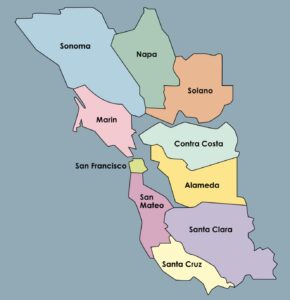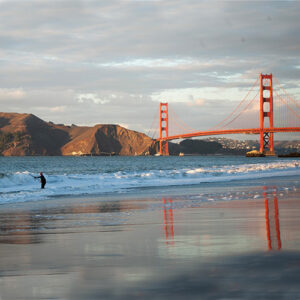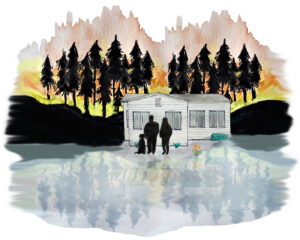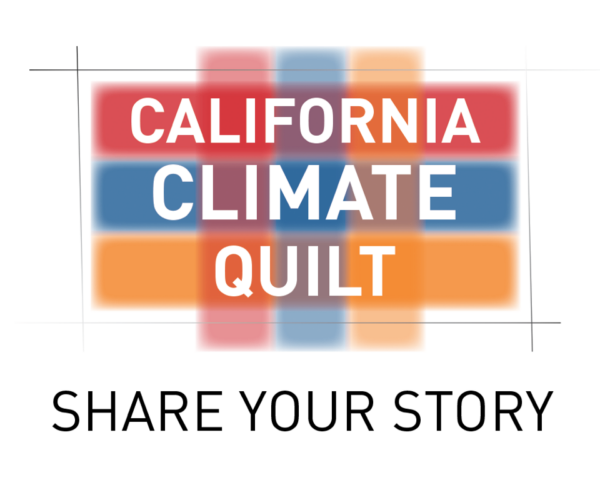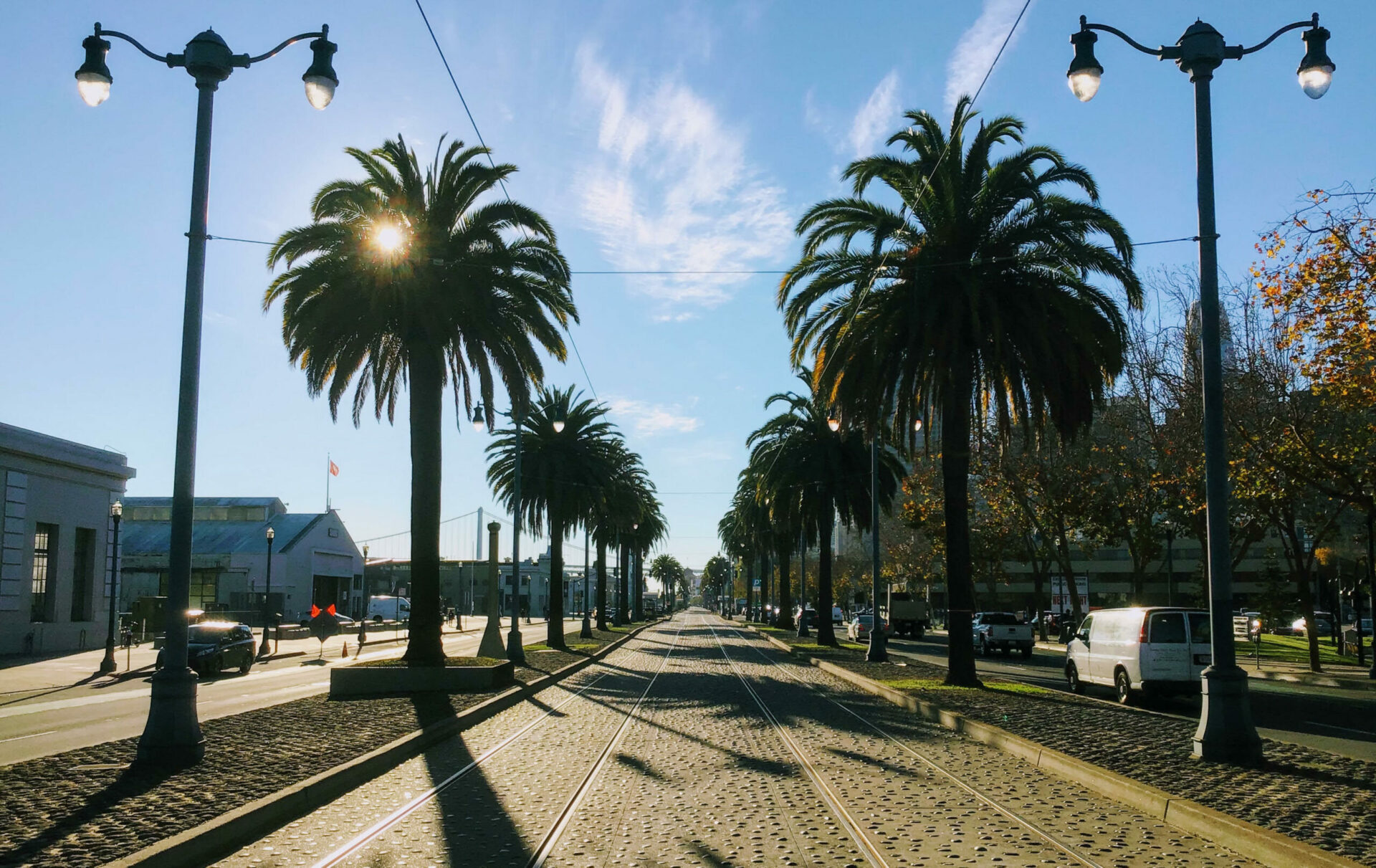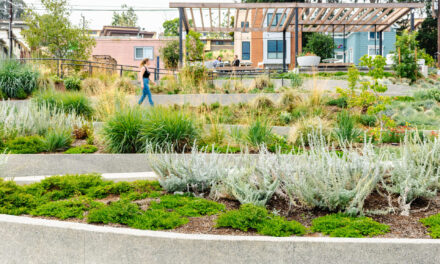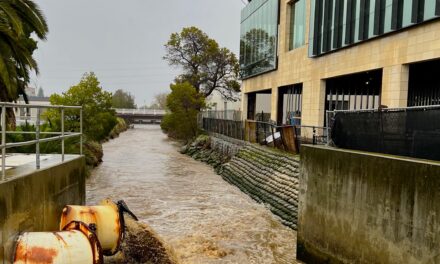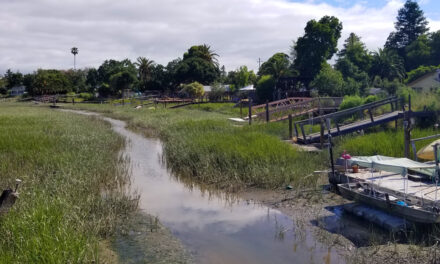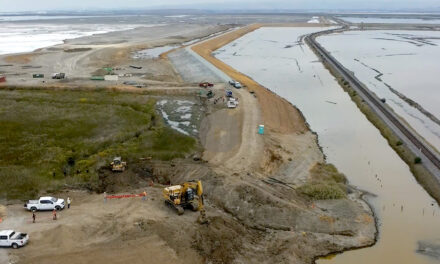Not Just Any Wall Anywhere
When Sam Liccardo, the mayor of San Jose, proposed last year the idea of building a seawall beneath the Golden Gate Bridge to keep the rising ocean from flooding Bay Area ports, he inadvertently helped to highlight what scientists recently flagged as a serious problem in the struggle to adapt to climate change — actions intended to help that wind up being counterproductive.
Climate policy experts call it “maladaptation,” and in a recent 3,700-page report from the United Nations warning of unavoidable impacts from climate change, the word occurs 360 times. The document concludes that, at this advanced stage in global warming, there will be no dodging extreme planetary trauma caused by melting sea ice, desertification, and other outcomes of rising average temperatures. However, the report’s authors — with the Intergovernmental Panel on Climate Change — recommend adaptive strategies to help communities cope with changes, and they repeatedly warn of maladaptation.
The word encompasses actions that worsen rather than alleviate climate-related impacts to infrastructure, environment, and communities, or which create new problems, especially for disadvantaged communities. The IPCC’s report, released in late February, names fire suppression and “hard defenses against flooding” as common examples of maladaptation. In California, each of these strategies has been applied broadly, illustrating how leaders and lawmakers may fall into the common trap of chasing short-term gains and limited geographical scopes rather than long-term, landscape-level resilience and flexibility.
Fire suppression, for instance, became the central objective of wildfire management agencies last century but, by allowing woodland fuels to accumulate, has led to the megafires that now occur every year throughout the West. And in southern California, sea walls line about 40 percent of the coastline. While they protect privileged communities, the barriers have had unintended consequences including notably worsened erosion on their seaward sides, and even the disappearance of public beaches.
Northern California cities have been less reliant on sea walls. Instead, smart planning has many communities looking at various sorts of green infrastructure to protect the shoreline from rising sea level. Wetlands have been restored along Highway 37, for example, and an experimental living shoreline is being planned in Sausalito as scientists assess ways to slow coastal erosion. In the South Bay, 15,000 acres of retired salt evaporation ponds are being converted to tidal wetlands.
In essence, maladaptation hasn’t been an outstanding problem in the Bay Area. “We’re more concerned with failing to adapt than we are with maladaptation,” says Dana Brechwald, manager of the San Francisco Bay Conservation and Development Commission’s Adapting to Rising Tides program.
Much of this infrastructure and San Francisco’s downtown waterfront straddle an aging seawall under the Embarcadero. The seawall is on the fast track for replacement. Photo: Ariel Okamoto.
The potential for sea walls to redirect, rather than absolve, impacts from rising waters is well understood in the Bay Area. The capacity for wetlands to grow and expand as the environment changes makes them a much more promising adaptation strategy — but there are not enough restoration projects in the works. “We need to do a lot more and faster,” Brechwald says.
She says it’s possible that the affluence of the Bay Area and the region’s high standards of living could be indirectly slowing action by providing residents with a false sense of security against climate change impacts. “If you pay $2 million for a house, you can’t imagine that house is going to be vulnerable,” Brechwald says. “There’s the assumption that you’re also paying for safety.”
Daniel Hossfield, also with BCDC’s Adapting to Rising Tides, says a likely route to inadvertently building a maladaptive project, and one his program aims to avert, is a lack of communication across the Bay Area’s dense grid of local governments. “We’d like to see governments avoid uncoordinated approaches across the region, because it’s very possible that a strategy employed on one side of the Bay will have impacts on the other,” he says.
The Adapting to Rising Tides program offers a set of basic guidelines to help ensure that planners more effectively and equitably plan for rising sea level. A project should be economically, politically, and legally feasible; provide economic benefits; avoid significant impacts to ecosystems and environmental resources; and help maintain public access to resources.
The old Golden Gate seawall project would violate essentially all of these guidelines, and perhaps the only reason the idea keeps resurfacing is its appealing potential to protect so many communities, and so many miles of shoreline, with a relatively short span of concrete. But its promise of bang for buck is outweighed, experts have agreed, by its potential for cataclysmic failure. In 2007, the BCDC dismissed the then-novel proposal as too expensive, certain to impact animal migrations, and loaded with potential to do more harm than good.
Fifteen years later, the idea is no less crazy, Hossfield says. “A barrier at the Golden Gate is an old idea that keeps returning due to the apparent simplicity compared to adapting to sea-level rise as a region. In reality, it would cause many drastic problems such as dramatically impacting the Bay and creating the possibility of a flood disaster of biblical proportions if it were to fail.”
Other Recent Posts
Martinez Residents Want More Than Apologies — They Want Protection
After a 2022 release of toxic dust and a February 2025 fire, people in the northeast Bay town are tired of waiting for safety improvements.
Weaving Fire Protection Out Of What’s Already There
A new Greenbelt Alliance report shows how existing vineyards, grasslands, and managed forests can slow wildfire and save vulnerable homes.
Fall Plantings Build Pollinator Habitats in Concord
Community groups, climate advocates and a church are coming together to plant pollinator gardens as monarchs, bees see population declines.
Newark Needs Housing, But Could Shoreline Serve A Higher Purpose?
The Bay Area needs more affordable housing, but would 196-homes or a buffer against sea level serve local needs better in the years ahead?
Learning the Art of Burning to Prevent Wildfire
In Santa Rosa’s Pepperwood Preserve, volunteers are learning how controlled fires can clear out natural wildfire fuel before it can spark.
Who Will Inherit the Estuary? Training for a Rough Future
The six-month program teaches students aged 17 -24 about the challenges facing communities around the SF Estuary, from Stockton to East Palo Alto.
Split Verdict Over State of the Estuary
Habitat restoration and pollution regulations are holding the Bay steady, but the Delta is losing some of its ecological diversity, says SF Estuary Partnership scorecard.
Volunteers Catch and Release Tiny Owls For Science
In Santa Rosa, citizen scientists capture northern saw-whet owls to help further research on climate impacts to the bird.
Antioch Desalination Plant Could Boost Local Water Supply
The $120 million plant opened this fall and treats 8 million gallons of brackish water a day, 75% of which is drinkable.
How Cities Can Make AI Infrastructure Green
Data centers fueling AI can suck up massive amounts of energy, water and land, but local policies can mitigate the impact.
More
- IPCC Climate Change 2022 Impacts, Adaptation and Vulnerability Report
- Climate Responses That Backfire Are a Growing Problem, IPCC Says (bloombergquint.com)
- Tidal Gate Across San Francisco Bay Proposed to Manage Sea Level Rise – Scientific American
- Embarcadero Seawall Resilience Program
- Adapting to Rising Tides, Bay Area

